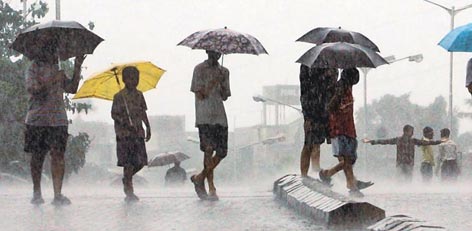No. of views : (2254)
4 signs that your child might have lazy eye
Posted on: 31/Mar/2021 8:39:17 AM

By Dr. Ajanta Chakravarty, Consultant � Ophthalmology, Columbia Asia Hospital Whitefield
For many, the term `Lazy eye` might sound new. A lazy eye is when there is abnormal visual development early in life. This visual abnormality which is also called as amblyopia may occur right from the birth of a baby until the age of 7 years. Lazy eyes are one of the leading causes of decreased vision among children.
If left untreated, the brain will learn to ignore the images coming from the weaker eye. This could result in permanent vision impairment.
What causes Lazy Eye?
There are ongoing research trying to establish the cause for lazy eye as in some cases doctors do not know the exact reason. Some of the common causes of amblyopia are:
Droopy eyelid:
Also called ptosis, a sagging eyelid can block your vision.
Muscle imbalance:
This is the most common cause, where an imbalance in the muscles that position the eyes leads to this disorder. It causes the eyes to turn out or cross in and prevent them from functioning in symmetry.
Refractive errors:
In some cases, one eye might have a better focus than the other. The other eye can be farsighted or nearsighted. So when the eye captures a blurry image and a clear one, the brain starts to focus on the clear one and ignore the blurry ones. If this is not attended to in the initial stages, vision in the blurry eyes worsens.
Strabismus:
In this condition, your eyes do not line up the way they should. One eye could turn in or out. Individuals with strabismus cannot focus their eyes together on an image and end up seeing double images. The brain will ignore the image captured by the eye that is not aligned.
Below are the signs that you should not ignore particularly in your kids:
1. Frequent squints:
When your child squints his eyes often or closes one eye when he steps outdoor on a sunny day, then there are chances that he might have a lazy eye. It indicates that one eye is weaker than the other.
2. Difficulty in reading:
Lazy eye makes reading difficult. It can cause a child to re-read words, skip words, misread etc. Reading demands extra effort and focussing and lazy eye can make the whole process stressful. The child might also struggle in math as he c cannot see the numbers accurately.
3. Accident-prone:
Does your child fall often or bumps into things? It could be due to lazy eye as it affects the ability to judge the location of an object and distance making the child fall. This could also be the reason why your child cannot keep up with his peers in sports which requires hand eye coordination.
4. Tilting head:
While watching TV, playing, running or during any other activity, does your child turn or tilt his head? As lazy eye affects one eye, your child will try to use his dominant eye to have a better view.
As lazy eye worsens over time, the earlier you get treated the better it is for the child. If your child is showing any of the above signs and symptoms, schedule an eye examination for a proper diagnosis so that the doctor can come out with an effective treatment plan at the earliest.







